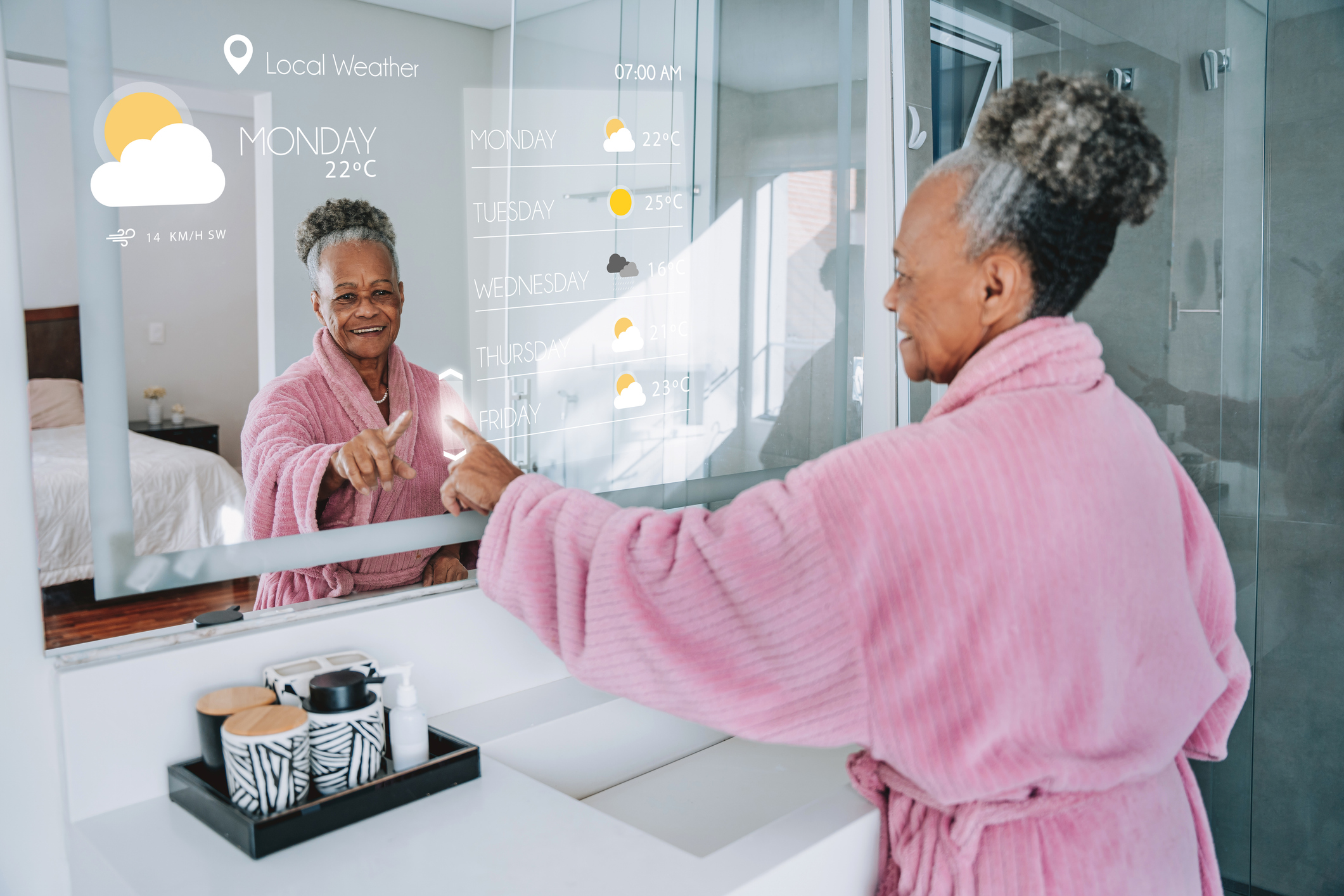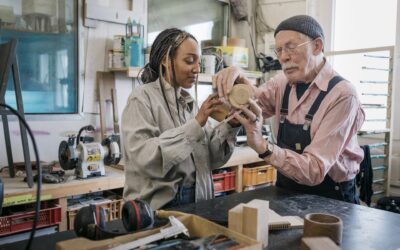Senior living is on the edge of one of the most significant shifts in its history. Over the next decade, the way older adults and their families search for, evaluate and choose their options will look very different from today. Changes in consumer behavior, advances in digital tools and new expectations for personalization and accessibility add up to one certainty: Not-for-profit organizations cannot afford to stand still in adapting to these trends. These are not passing fads; they are already replacing today’s common practices.
Of the many changes on the horizon, three stand out as the most important:
- AI-driven personalization that changes how we communicate and nurture leads.
- Voice and ambient computing that make content about your community accessible in new ways.
- Immersive and visual technologies that reshape the way prospects experience communities online.
Let’s explore how each of these trends can unlock powerful competitive advantages for their early adopters from 2026 to 2030, and why they should be on the strategic agenda for any Life Plan Community seeking to maintain market leadership and long-term sustainability. While technology cannot replace trust, transparency or human connection in senior living sales, these three trends can greatly enhance your messaging and your prospects’ experience.
1. AI-Driven Personalization: The New Standard of Connection
If there is one technology trend that overshadows all others in the coming years, it is AI. By 2030, AI will no longer be a shiny new tool; it will be the hidden infrastructure behind nearly every search query, every marketing campaign and every customer interaction.
Future residents are already used to Netflix suggesting the perfect movie or Amazon recommending the right product. They will expect the same level of personalization when researching where to live. This represents both an opportunity and a challenge.
Some of the Ways AI Will Change Senior Living Marketing
- AI systems are already transforming search engines, ad platforms and customer service. Instead of 10 blue links in response to a query, tomorrow’s seniors will increasingly receive synthesized answers from AI-driven search assistants. Already, prospects are learning they can simply ask an AI tool: “What are the best independent living options near me with cultural programs and walking trails?” The communities with clear, authoritative content will be the ones recommended, complete with summarized reviews and even suggested next steps. If your community’s content is not structured and authoritative enough for AI to recognize and elevate within its summaries, you may find yourself invisible to a growing segment of searchers.
- On the engagement side, AI-driven personalization allows your sales office to respond to someone who clicks on your website’s dining content with personalized follow-up featuring a chef-led cooking demonstration, while someone that clicked on wellness gets stories about yoga classes or fitness clubs. For communities that embrace it, AI will (and already can) do more than just automate—it will create tailored journeys that feel thoughtful and human.
- Virtual assistants and AI-powered chat can also make first contact faster and more responsive. Prospects can ask about floor plans, amenities or transportation options any time of day. Quick, accurate responses will build trust and encourage the next step: scheduling a visit.
Why It Matters
The community that incorporates this level of personalization today stands out in its market. By 2030, virtually every community will personalize on this level, and those that don’t will be at a severe competitive disadvantage.
2. Voice and Ambient Computing: Convenience Meets Accessibility
Voice technology is no longer futuristic—it’s already embedded in seniors’ daily lives. From smart speakers to voice assistants on phones and cars, asking questions out loud has become second nature. For senior living prospects, voice technology offers both convenience and accessibility.
How Voice Changes the Discovery Process
- Imagine a future resident thinking about her future while cooking dinner: “Find independent living communities nearby with outdoor pools and art classes.” Instead of having to browse websites, she will get a short, direct answer while she’s standing in her kitchen. If your community isn’t optimized for these voice queries, you may never appear in that conversation.
- Voice optimization means structuring your content around natural, conversational questions. Clear Frequently Asked Questions (FAQs), local keywords and well-marked data on your site make it more likely your community will surface in voice results.
- Picture scheduling a tour by simply asking Alexa or receiving an audio “welcome” message after requesting information. For prospects who may be busy downsizing, traveling or still working part-time, this type of convenience makes the process smoother and more appealing.
Why It Matters
Product development in all areas of life is moving in the direction of voice technology. By embracing voice and ambient computing, you are adapting to the way many seniors now consume information. It’s not only a marketing advantage—it’s also a statement about being forward-looking and resident-focused.
3. Immersive and Visual Technologies: Bringing Lifestyle to Life
Choosing a Life Plan Community is about imagining a new lifestyle, and immersive and visual technologies will continue to revolutionize how that story is told.
Virtual Tours, AR and Short-Form Video
Technology-driven tools are already standard on senior living websites and marketing programs, and their role and impact are going to increase and improve significantly.
- High-quality virtual tours aren’t just “photos on a website”—they’re interactive experiences that give a sense of scale, flow and atmosphere. For prospects relocating from another state or involving family in different cities, virtual tours make participation easy.
- AR turns abstract floor plans into personalized possibilities. Imagine a prospective couple using their phones to place virtual furniture into a model apartment or see how a balcony view looks at sunset.
- Short-form video is one of the most powerful storytelling formats online. Prospects can watch a 30-second clip of residents enjoying a cooking class, hear from the head chef or get a peek at a concert on campus. These authentic glimpses build excitement and help prospects picture themselves in the community.
Why It Matters
Future residents want to feel the energy and community you offer. Immersive and visual technologies let them experience this even before a visit. We’ve been advocating for how to harness the power of storytelling in marketing videos, and advances in these tools are going to make that storytelling even more powerful.
Connecting the Dots
The organizations that embrace these trends in 2026 will enjoy a great competitive advantage; by 2030, late adopters will be the exception and, far worse, won’t feel like “home” to the vast majority of seniors who will take this technology for granted.
- AI will make sure the right story reaches the right person.
- Voice will ensure they can access that story easily, whenever they want.
- Immersive media will make the story real and tangible, building confidence to take the next step.
“How We’ve Always Done It” Becomes Counterproductive
We recommend Life Plan Communities address these critical trends in strategic planning. The stakes are high, as “how we’ve always done it” will truly become more than out-of-date; many of the most cherished marketing practices of 2020-2025 will be outright counterproductive in 2026-2030. Leadership teams and marketing leaders should:
- Experiment with personalization. Use data from website behavior and inquiries to send more relevant follow-ups, showcasing different aspects of your community.
- Audit your website for AI and voice readiness. Make sure your content is structured, conversational and clear about lifestyle features.
- Start small with immersive assets. Even a single high-quality 3D tour or a series of short resident lifestyle videos can have a big impact.
These are three of the trends that will most shape how prospects discover and connect with the communities of the future.
Positioning Your Community for the Next Era of Engagement
The communities that thrive in 2026 and beyond will be those that approach technology not as a checklist, but as an extension of their mission and values. Now is the time to address the dominant trends through intentional planning, pilot programs and cross-department collaboration so you can adapt thoughtfully, not reactively.
At Love & Company, we help our clients clarify priorities, align technology with purpose and design marketing approaches that feel as human as they are modern. If you’d like to discuss how your organization can prepare for these emerging trends, I invite you to start a conversation by reaching out to me at wlangley@loveandcompany.com. Sometimes the most valuable next step isn’t a new tool—it’s a clearer strategy.




